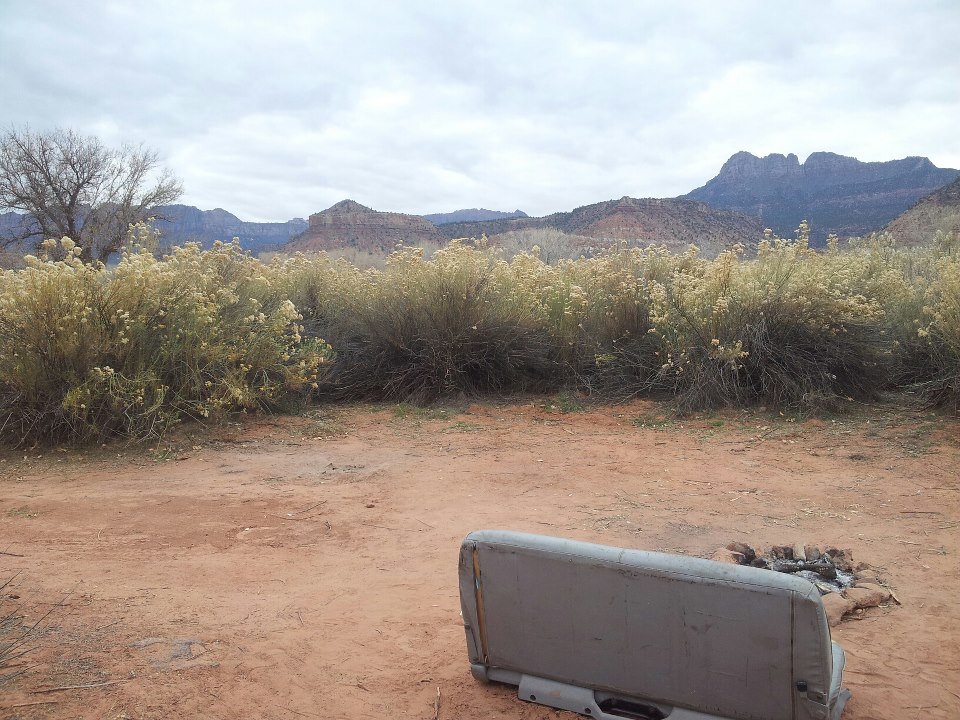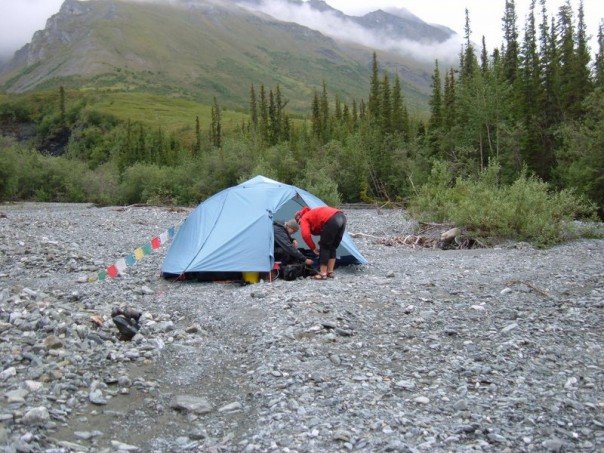
Ground
- You want to find flat, dry, non-vegetated ground to camp on. Pay attention to where the water will collect or pass through if it rains. Will you end up in a puddle of mud in the morning? Is there a log or rock in the way of your tent? Will you be killing native plants or destroying an ecosystem by placing your tent?
Distance from water
- As nice as it is to camp right next to a water source, this is not the best practice. You can still camp close enough to get water and go for a nice hike. The general Leave No Trace (LINK TO LNT ARTICLE) rule is to camp at least 200 feet from a water source. That is definitely still close enough to go for an evening or morning swim and not freeze on your way back home.
Privacy
- If you are trying not to run into swarms of campers and families, then dispersed camping is for you. Seeing another group of campers, especially families, is pretty rare in National Forests. Occasionally, mostly in the West, you will run into families shooting targets for the day. These people usually just pull a big truck off the road and set up a range. I just drive on by and wave; I have never been bothered by families of shooters.
Safety
- Look above you. Are there any dead or hanging branches? Think about a heavy rain or wind. Does everything around you look alive and solid? Waking up, or not waking up, to a tree crashing onto your tent or car is never desirable and is often avoidable. Take a quick look above you before settling in.
- Carry bear or pepper spray. Know the wildlife in the area and what precautions to take. The National Park rangers are great resources for this information and often have printed pamphlets full of facts about the area and safety tips. Some places, especially with bears, recommend hanging your food at night. Find this information before you go so that you have all of the necessary gear.
- Check the weather. Many people don’t know that a lot of deserts in the South West USA get very cold at night. You need to be prepared for cold, hot, wet, or dry weather.
- People. Are there people around? Be aware of them. Listen to your gut. If your gut says keep driving, then do just that. If your gut says to go say hello and introduce yourself, then do that! Some of the most interesting people I have met have been in the woods. Just remember to always keep your eyes open never stay in an uncomfortable situation just to be polite. You don’t owe anyone anything, especially out in the woods. Don’t carry a knife for protection from people if you don’t know how to use it, it will end up in their hands. Stick to pepper spray or a self-defense class (or both!) and know your way out.
- Communication and information. Let people know where you are going. Even a simple text before you go into the woods saying where you are going and when you will be out is good enough. If you have an accident and can’t make it out, you want to be sure that people are coming to find you and that they know where to look. Just make sure you remember to tell them when you are out! That being said, it’s always a good idea to make sure your cell phone has battery. Many National Forests do not have great cell service, so you can turn it off to save battery for when you are out. You don’t want to have an accident and not be able to call for help because you couldn’t turn off your phone and the battery is dead. If you really need to keep it on, think about investing in a small solar charger.
- Rules. Make sure that you are legally allowed to camp where you are. There is little scarier than being woken up to an angry man in the middle of the night because you are on his property.
Beauty
- Find somewhere you love and want to spend your time! That’s why you’re here, isn’t it?
Find this article interesting or helpful? Like or share it on facebook!
